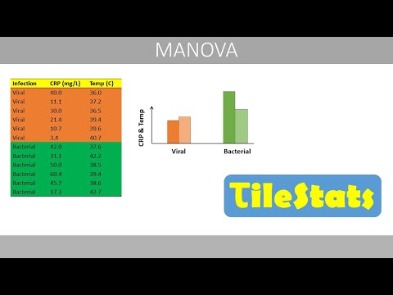Content
Measuring Progress – Input MethodsInput methods are based on the inputs used by the entity in satisfying a performance obligation. When using an input method, an entity will recognize revenue based on inputs expended in proportion to the total inputs the entity expects to expend to completely satisfy the performance obligation. Examples of inputs that may be incorporated into https://kelleysbookkeeping.com/ an input method include labor hours expended, costs incurred, and machine hours used. When applying an input method, an entity identifies a single measure of progress for each performance obligation that depicts the transfer of control of the promised good or service to the customer. Historically, revenue recognition has been the most significant area of accounting fraud.
- A Shortcut For Implementing The New Revenue Standard (ASC 606 / IFRS 15)?
- At a high level, the standalone selling price is the price at which an entity would sell a promised good or service separately to a customer.
- Implementing the new revenue recognition standards IFRS15 AND ASC606 may be challenging, since implementation can be a complex process requiring thorough planning.
- Companies also need to consider what information they need to compute these book-tax differences and whether the information will be available after the change for financial statement purposes.
- In April 2016 the Board issued Clarifications to IFRS 15 Revenue from Contracts with Customers clarifying the Board’s intentions when developing some of the requirements in IFRS 15.
- There are a couple of carve outs for industries that are within other standards such as leases, insurance and financial instruments.
Sometimes, the transaction price includes a discount or variable consideration that relates entirely to one of the performance obligations in a contract. The requirements specify when an entity should allocate the discount or variable consideration to one (or some) performance obligation(s) rather than to all performance obligations in the contract. IFRS 15 establishes the principles that an entity applies when reporting information about the nature, amount, timing and uncertainty of revenue and cash flows from a contract with a customer. Applying IFRS 15, an entity recognises revenue to depict the transfer of promised goods or services to the customer in an amount that reflects the consideration to which the entity expects to be entitled in exchange for those goods or services.
THE GOAL OF ASC 606:
This gaming of the numbers should be a stark reminder to investors that financial statements do not tell the full story of a business. Over the long-term, it is the economic cash flows, not the accounting earnings, of a business that drive stock prices. Telecom companies face significant challenges regarding the timing and allocation of their revenue due to their tendency to bundle a variety of products and services together. These bundles make it difficult to determine what portion of a transaction price is attributable to each performance obligation (Step 4 of the new standard) and when each performance obligation is completed (Step 5 of the new standard). Most companies have seen relatively little impact from the new revenue recognition rules, but for a handful of industries it significantly distorted revenue and earnings over the past year. This report digs into how the new rule works, what’s changed, and how investors should respond.
- Moreover, the disclosure requirements provide information which can enable the users of the financial statements to understand the nature, amount, timing, and uncertainty of revenues and cash flows related to contracts with customers.
- The Boards concluded that assurance-type warranties do not provide an additional good or service to the customer (i.e., not a separate performance obligation).
- One particular problem could be non-cash transactions or even consideration.
- BDO supports the Board’s efforts to reduce complexity and diversity in practice in determining whether a profits interest award is accounted for as a share-based payment under Topic 718 but recommends certain changes to the proposed Update.
Hundreds of domestic publicly traded entities have relied on BDO for assistance not only with their ongoing SEC filings, but also with their public offerings. Our SEC practice professionals maintain a constructive working relationship with the SEC staff, closely monitoring changes in reporting requirements and keep engagement personnel informed of changes. Recognize revenue when (or as) the entity satisfies a performance obligation. If either of these factors is present, the hospital has provided an implicit price concession, even if the hospital will continue to attempt to collect the full amount of discounted charges.
Tax Strategist Webcast Series
The certification is granted to financial professionals who have demonstrated at least 4,000 hours of financial experience in the construction industry over the last five years. As Partner-in-Charge of B&C Construction Services, Bob works with general contractors, construction management firms and specialty trades. Bob works with these contractors to help evaluate project profitability, manage cash flow, prepare contractor specific tax returns and financial statements and assist in addressing concerns with surety and banking communities.
- Providing detail on how the change impacts prior years enables financial statement users to better analyze changes in revenue and profitability.
- More equity investors that are involved with projects to receive income tax credits and other income tax benefits might be able to use the proportional amortization method (PAM) to account for their investments.
- Kelly noted, the new revenue recognition rule will ultimately allow some portion of the software sector to recognize more of their long-term contract revenue immediately.
- These costs include commissions, legal fees, marketing costs, and bid and proposal costs.
The assessment of whether a significant change in facts and circumstances occurred is situation-specific and often a matter of judgment. The 5-step model within IFRS 15 and ASC 606 applies to ALL contracts with customers, regardless of industry, unless the contract is within the scope of other guidance (for example, leases within the scope of ASC 842). In May 2014 the Board issued IFRS 15 Revenue from Contracts with Customers, together with the introduction of Topic 606 into the Financial Accounting Standards Board’s Accounting Standards Codification®. IFRS 15 replaces IAS 11, IAS 18, IFRIC 13, IFRIC 15, IFRIC 18 and SIC‑31.
EFRAG seeks users’ input on the effects of the implementation of IFRS 15
Currently, requirements for reporting revenue—a critical metric for evaluating a company’s financial performance—vary across different industries, jurisdictions and markets. These discrepancies create incongruent accounting results for economically similar transactions, rendering macro-level comparisons nearly impossible. Taxpayers will want to thoroughly assess all of their revenue streams and assess the proper tax methods for each to plan the appropriate actions for a successful implementation.

The upcoming changes to revenue recognition standards are more than just a headache for your finance department. They can potentially impact the growth engines at the heart of any business—and subscription-based companies are particularly vulnerable to these consequences. Looking at revenue recognition methods sooner, rather than The New Revenue Recognition Accounting Standard later, will put companies at an advantage and make the implementation process smoother. It is important to make sure that tax considerations are part of the upfront discussion and not an afterthought. Taking a fresh look at the tax methods around revenue recognition will be key in understanding the effect of any book changes.
The ultimate transaction price should reflect both explicit and implicit price concessions. Another obvious area of change will be in commission payments for sales persons and third parties. Previously they may have been paid when the revenue was recognized over the life of a contract. This could cause a commission payment to be made in Year 1 of a 5-year contract. The five-year split of a commission payment has acted as an internal compliance control to keep such payments low enough so as not to create a fund for bribery.
These methods are the adjusted market approach, the expected cost plus margin approach, and the residual approach. Each method requires an in depth discussion to truly understand proper application, but for brevities sake, identification of these methods will have to do. With ASU 606, one of the biggest changes is the requirement to combine multiple contracts into one for the purpose of financial reporting. This is required if the contracts have the same commercial objective, are interdependent, or share a single performance obligation. Certain businesses must abide by regulations when it comes to the way they account for and report their revenue streams. Public companies in the U.S. must abide by generally accepted accounting principles, which sets out principles for revenue recognition.
The FASB and the IASB provided an outline of five key steps to implementing the new revenue recognition standards (see “5 Steps of Revenue Recognition”). Management must ensure that adequate internal controls exist and business processes have been updated to avoid errors in reporting and potential fraud. The new revenue recognition standard represents a fundamental change in how hospitals recognize revenue from customer contracts. Recognizing revenue earlier or later than you would have under existing GAAP could impact your financial performance metrics, financing and tax planning, and debt covenant compliance, so you’ll want to get ahead of the changes.

